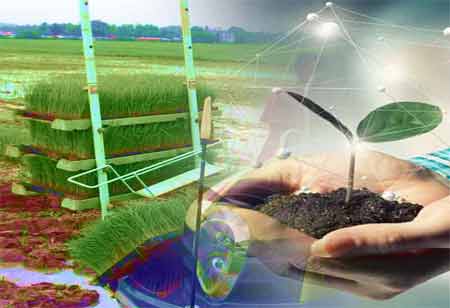Thank you for Subscribing to Electrical Business Review Weekly Brief
I agree We use cookies on this website to enhance your user experience. By clicking any link on this page you are giving your consent for us to set cookies. More info
Understanding the Role of Electrical Transmission
The role of electric transmission will only grow significantly, reaffirming its status as a linchpin of the energy transition and a driver of human advancement.

By
Electrical Business Review | Tuesday, February 18, 2025
Stay ahead of the industry with exclusive feature stories on the top companies, expert insights and the latest news delivered straight to your inbox. Subscribe today.
The role of electric transmission will only grow significantly, reaffirming its status as a linchpin of the energy transition and a driver of human advancement.
FREMONT, CA: Electric transmission is essential for delivering electricity from power sources to end consumers, removing geographic restrictions, and maximizing energy distribution. It is also essential for combating climate change, promoting economic expansion, and integrating renewable energy. Transmission networks help ensure a cleaner and more sustainable energy future by facilitating long-distance power transportation.
Electric transmission networks enhance grid resilience and reliability by enabling surplus electricity to be redirected to areas experiencing shortages or disruptions in supply. The capability is essential for bridging the gap between electricity generation sites, often located in remote areas with abundant natural resources such as hydropower plants in mountainous regions, wind farms in coastal areas, and urban centers where electricity demand is highest. By efficiently transmitting electricity over vast distances, transmission infrastructure ensures that electricity generated at one location can meet the needs of consumers located hundreds or even thousands of kilometers away.
Through interconnections and grid balancing mechanisms, transmission systems facilitate the seamless exchange of electricity between different regions, mitigating the impact of localized outages and optimizing the utilization of available generation capacity. The dynamic response capability is crucial for maintaining grid stability and preventing widespread blackouts, especially in interconnected power systems serving large geographical areas. Electric transmission supports economic development and prosperity by facilitating affordable and reliable electricity access. Renewable energy is often generated in remote locations with favorable resource conditions but far from population centers where electricity demand is highest.
Transmission infrastructure provides the necessary linkages to transport renewable electricity from these distant sites to urban areas, which can displace fossil fuel-based generation and reduce greenhouse gas emissions. Electric transmission is pivotal in integrating renewable energy sources into the grid. Industries, businesses, and households rely on electricity as a fundamental input for manufacturing, commerce, and daily activities. A robust transmission infrastructure ensures electricity is available when and where needed, fostering economic growth, job creation, and improved living standards.
Electric transmission infrastructure catalyzes technological innovation and grid modernization. As the energy landscape evolves and new technologies emerge, transmission systems must adapt to accommodate distributed generation, energy storage, electric vehicles, and advanced grid management solutions. Investments in transmission capacity and reliability enhancements enable the seamless integration of these innovations, unlocking new opportunities for efficiency improvements, demand response, and grid optimization. By embracing innovation and modernizing infrastructure, electric transmission networks can meet the evolving needs of a dynamic energy ecosystem.
Transmission investments can attract new businesses, stimulate investment, and enhance regional competitiveness by reducing transmission constraints and electricity costs. Electric transmission is a cornerstone of modern society, underpinning economic prosperity, environmental sustainability, and energy security. Its importance extends beyond delivering electricity from point A to point B; it embodies the essential infrastructure that powers economies, sustains livelihoods, and drives progress.








